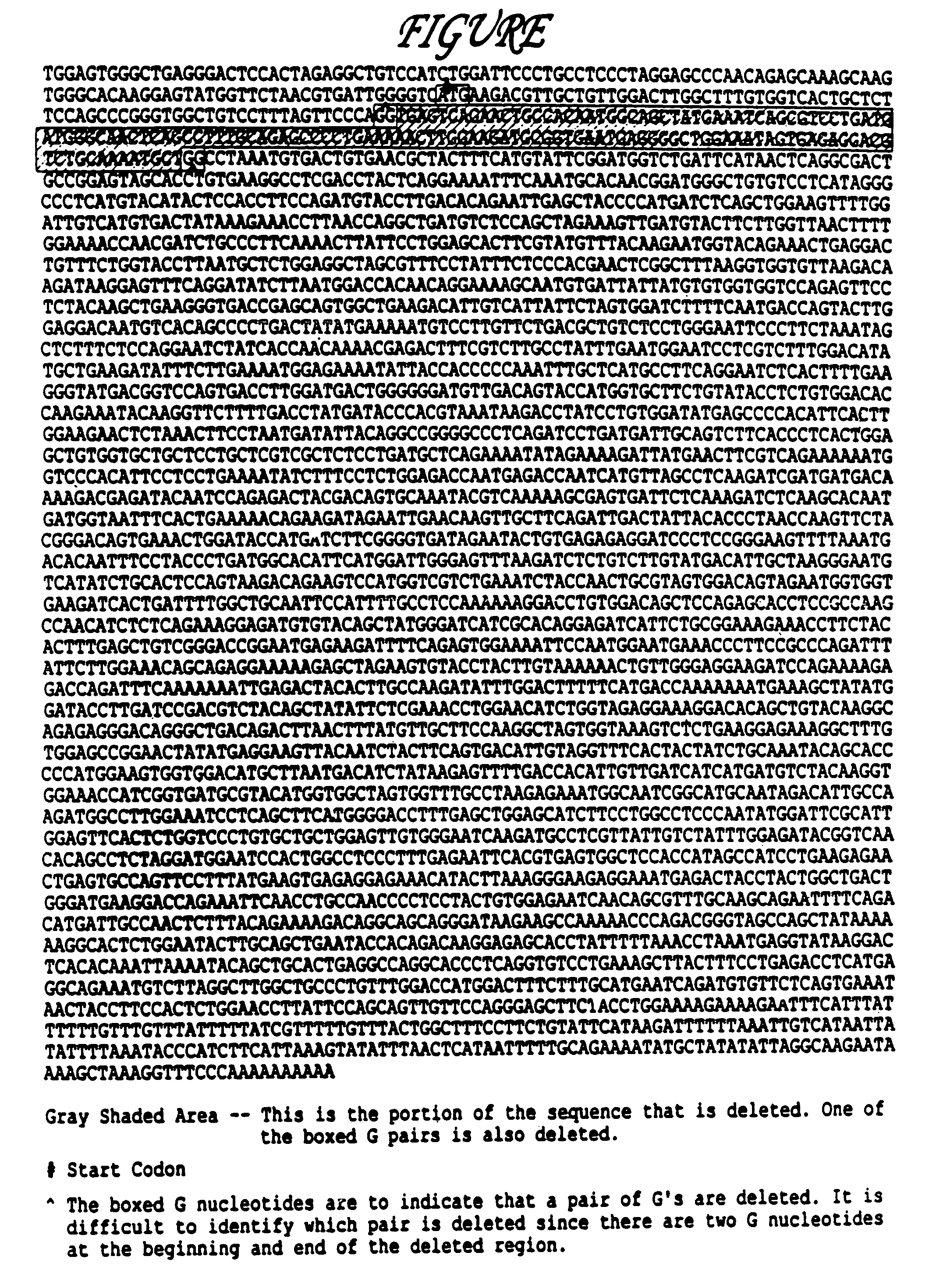Compositions that specifically bind to colorectal cancer cells and methods of using the same
a colorectal cancer and compound technology, applied in the field of colorectal cancer in vitro diagnostic methods, can solve the problems of low success rate, small improvement, and the mortality rate of newly diagnosed large bowel cancer, and achieve the effect of preventing or combating the metastasized colorectal cancer
- Summary
- Abstract
- Description
- Claims
- Application Information
AI Technical Summary
Benefits of technology
Problems solved by technology
Method used
Image
Examples
example 1
[0340]As stated above, a CRCA-1 translation product binding moiety is a CRCA-1 translation product ligand that may be an antibody, a protein, a polypeptide, a peptide or a non-peptide. Peptides and non-peptide CCK A receptor specific ligands may be identified using well known technology.
[0341]Over the past 10 years, it has become recognized that the specific high-affinity interaction of a receptor and a ligand, for example a CRCA-1 translation product and an anti-CRCA-1 translation product antibody, has its basis in the 3-dimensional conformational space of the ligand and the complementary 3-dimensional configuration of the region of the molecule involved in ligand binding. In addition, it has become recognized that various arrays of naturally-occurring amino acids, non-natural amino acids, and organic molecules can be organized in configurations that are unrelated to the natural ligands in their linear structure, but resemble the 3-dimensional structure of the natural ligands in co...
PUM
| Property | Measurement | Unit |
|---|---|---|
| nucleic acid | aaaaa | aaaaa |
| nucleic acid sequence | aaaaa | aaaaa |
| concentrations | aaaaa | aaaaa |
Abstract
Description
Claims
Application Information
 Login to View More
Login to View More - R&D
- Intellectual Property
- Life Sciences
- Materials
- Tech Scout
- Unparalleled Data Quality
- Higher Quality Content
- 60% Fewer Hallucinations
Browse by: Latest US Patents, China's latest patents, Technical Efficacy Thesaurus, Application Domain, Technology Topic, Popular Technical Reports.
© 2025 PatSnap. All rights reserved.Legal|Privacy policy|Modern Slavery Act Transparency Statement|Sitemap|About US| Contact US: help@patsnap.com

